Table of Contents
Tunisian Arabic, or Tunisian Colloquial Arabic (TCA), is a dialect of Arabic spoken throughout Tunisia. Of course, the dialect varies somewhat from region to region, generation to generation, and from the working class to the middle class. The variety presented here is that of younger, middle-class Tunisians from the capital, Tunis, and nearby cities.
This is a brief introduction to Tunisian Arabic grammar. It covers the basics of noun and adjective inflections as well as verb conjugations. It also highlights some of the idiosyncrasies of Tunisian Arabic that distinguish it from other varieties of Arabic. (This grammar reference is taken from the book Tunisian Colloquial Arabic Vocabulary.)
Nouns
Nouns in Tunisian Arabic are either masculine or feminine (in gender), and can be singular or plural (in number). A noun’s gender and number are significant in that they determine the form that words (such as pronouns, adjectives, and verbs) relating to it will take.
Many nouns have irregular plural forms. The regular plural suffix is ـات -ēt/-āt for both masculine and feminine non-human nouns, and also for feminine human nouns. Masculine human nouns take the regular plural ـين -īn.
- ɧayewēn حَيَوان (animal) → ɧayewēnēt حَيَوانات (animals)
- marra مرّة (time) → marrāt مرّات (times)
- mu3allim مُعلِّم (male teacher) → mu3allmīn مُعلّْمين (teachers)
- mu3allme مُعلّْمة (female teacher) → mu3allmēt مُعلّْمات (female teachers)
Most feminine nouns end in ـة -e/-a. A masculine human noun can normally be made feminine by adding ـة -e/-a, as with the example ‘teacher’ above.
The Definite Article
The definite article in Tunisian Arabic is الـ il- and is prefixed to a noun (or adjective).
- ktēb كْتاب (a book) → ilktēb الكْتاب (the book)
- šems شمْس (a sun) → iššems الشّمْس (the sun)
- jim3a جِمْعة (a week) → iljim3a الجِمْعة (or ijjim3a الجِّمْعة) (the week)
In natural speech, the i- can be dropped from the definite article. Tunisians may also leave the alif (ا) unwritten to reflect this pronunciation: -lktāb لْكْتاب (the book). When preceding two consonants, this may also sound like li-: -liktāb لِكْتاب (the book)
Demonstrative Pronouns
Demonstrative pronouns in Tunisian Arabic agree with the noun they modify in number and gender. The plural forms are used with both human and non-human plurals.
- hēđē هاذا (this, that) [m.]
- hēđēke هاذاكَ (that over there) [m.]
- hēđī هاذي (this, that) [f.]
- hēđīke هاذيكَ (that over there) [f.]
- hēđūmē هاذوما (these, those) [pl.]
- hēđūkum هاذوكُم (those there) [pl.]
As the subject before a predicate:
- hēđē ktēb. هاذا كْتاب. (This is a book.) [lit. this book]
- hēđī karhbe. هاذي كرْهْبة. (This is a car.)
- hēđūmē ktub. هاذوما كْتُب. (These are books.)
As demonstrative adjectives, they follow the noun they modify. The noun takes the definite article:
- -lktēb hēđē kbīr. الكْتاب هاذا كْبير. (This book is big.) [lit. the book this big.]
- ilkarhbe hēđī kbīra. الكرْهْبة هاذي كْبيرة. (This car is big.)
- -lktub hēđūmē kbār. الكْتُب هاذوما كْبار. (These books are big.)
Possessive Constructions
Possessive constructions in Tunisian Arabic can be represented in a few ways. Possessive suffixes can be added to nouns:
- kutb-i كُتْبــي (my books)
- ktub-ne كْتُبْــنا (our books)
- kutb-ik كُتْبـِـك (your books) [m.] or [f.]
- ktub-kum كْتُبْــكُم (your books) [pl.]
- kutb-u كُتْبـُـه (his books)
- ktub-hum كْتُبْــهُم (their books)
- ktub-he كْتُبْــها (her books)
Notice that the vowel in the example above changes position (kutb- → ktub-) when followed my a suffix beginning in a consonant. This is a common occurrence in Tunisian Arabic, which you may notice in some vocabulary items presented in the book Tunisian Colloquial Arabic Vocabulary.
The first three suffixes above take the forms ـيا -ye/-ya, ـك -k, and ـه -h when suffixed to a noun ending in a vowel. However, the feminine ending ـة -e/-a changing to ـتـ -t in a possessive construction.
- kursi كُرْسي (chair)
- kursī-ye كُرْسييا (my chair)
- kursī-k كُرْسيك (your chair)
- kursī-h كُرْسيه (his chair) xāle خالة (aunt)
- xālti خالْتي (my aunt)
- xālithe خالِتْها (her aunt)
Another common way to form a possessive construction is by adding the possessive suffix to the word mtē3 مْتاع, which follows a noun with a definite article:
- ilktub mtē3-i الكْتُب مْتاعي (my books)
- ilktub mtē3-ne الكْتُب مْتاعْنا (our books)
- ilktub mtē3-ik الكْتُب مْتاعِك (your books) [m.] or [f.]
- ilktub mtē3-kum الكْتُب مْتاعْهُم(your books) [pl.]
- ilktub mtē3-u الكْتُب مْتاعُه (his books)
- ilktub mtē3-hum (→ mtēɧum) الكْتُب مْتاعْهُم (their books)
- ilktub mtē3-he (→ mtēɧa) الكْتُب مْتاعْها (her books)
The word mtē3 مْتاع can also connect two nouns. It can be thought of as meaning of, but often translates as a compound noun or ’s in English:
- šēn mtē3 rādyo شان مْتاع رادْيو (a radio station) [lit. station of radio]
- iddār mtē3 irrājil الدّار مْتاع الرّاجِل (the man’s house) [lit. the house of the man]
Two nouns may also be connected without using mtē3 مْتاع. The first noun cannot take the definite article:
- šīfūr kār شيفور كار (a bus driver) [lit. driver bus]
- šīfūr ilkār شيفور الكار (the bus driver) [lit. driver the bus]
- kēs mē كاس ما (a glass of water) [lit. glass water]
- kēs ilmē كاس الما (the glass of water) [lit. glass the water]
Prepositions
Prepositions in Tunisian Arabic can take possessive suffixes, which act like object pronouns:
- minhe مِنْها (from her)
- quddēmne قُدّامْنا (in front of us)
- lūh لُه or līh ليه (to him)
- m3āye مْعايا (with me)
Adjectives
Adjectives in Tunisian Arabic agree with the noun they modify in gender and number, and thus have three forms: masculine, feminine, and plural. Feminine adjectives are formed from masculine adjectives by adding ـة -e/-a. Plural adjectives regularly take ـين -īn; however, like nouns, many adjectives have irregular plural forms:
- bēhi باهي (good) [m.]
- bēhye باهْية (good) [f.]
- bēhīn باهين (good) [pl.] (regular plural)
- kbīr كْبير (big) [m.]
- kbīra كْبيرة (big) [f.]
- kbār كْبار (big) [pl.] (irregular plural)
Plural adjectives are used with human and non-human* plural nouns:
- bēb kbīr باب كْبير (a big door)
- bībēn kbār بيبان كْبار (big doors)
- mdīne kbīra مْدينة كْبيرة (a big city)
- mudun kbār مُدُن كْبار (big cities)
- rājil bēhi راجِل باهي (a good man)
- rjēl bēhīn رْجال باهين (good men)
- mrā bēhya مْرا باهْية (a good woman)
- nsē bēhīn نْسا باهين (good women)
An adjective also agrees in definiteness by taking the definite article if its noun is definite:
- ilbēb ilkbīr الدار الكْبير (the big door) [lit. the door the big]
- ilmdīne ilkbīra المْدينة الكْبيرة (the big city) [lit. the city the big]
In the above examples, the adjectives are used attributively, that is, as part of a noun phrase. In Arabic, adjectives follow the noun they modify. In English attributive adjectives precede nouns; however, predicate adjectives follow the verb to be. In Arabic, predicate adjectives do not agree in definiteness.
- ilbēb kbīr. الباب كْبير. (The door is big.) [lit. the door big]
- ilmdīne kbīra. المْدينة كْبيرة. (The city is big.) [lit. the city big]
Equational Sentences
Equational sentences are sentences which would have the verb to be (am, is, are) in English. The last two examples in the previous section are equational sentences. Notice that there is no word for is in the Arabic sentences. The verb to be is not needed in present-tense equational sentences in Arabic. Of course, the predicate is not always an adjective; it can also be a noun, location, etc.:
- bāba mu3allim. بابا مُولِّم. (My father is a teacher.)
- ilmrā hnē. المْرا هْنا. (The woman is here.)
Negative
In Tunisian Arabic, negative equational sentences contain the word موش mūš not:
- ilbēb mūš kbīr. الباب موش كْبير. (The door is not big.) [lit. the door not big]
- ilmdīne mūš kbīra. المْدينة موش كْبيرة. (The city is not big.) [lit. the city not big]
Interrogative
Interrogative sentences can be formed in several ways:
- by simply by using a rising intonation;
- by placing ياخي at the beginning of the question;
- (in yes/no questions only) by moving the predicate to the beginning of the sentence and add the suffix ـشي -ši onto it.
Notice (in the audio) that Tunisians often tend to trail off questions with an extra syllable ‘a…’:
- ilbēb kbīr? الباب كْبير؟ (Is the door big?)
- yēxi -lbēb kbīr? ياخي الباب كْبير؟ (Is the door big?)
- kbīr-ši ilbēb? كْبيرشي الباب؟ (Is the door big?)
Pronouns
Tunisian Arabic pronouns may act as the subject of an equational sentence. Notice that, unlike in most other varieties of Arabic, there is a single second-person singular pronoun (‘you’) used when speaking to either a man or a woman:
- ēne آنا I [m.] or [f.]
- aɧne أحْنا we
- inti اِنْتِ you [m.] or [f.]
- intūme اِنْتوما you [pl.]
- huwwe هُوَّ he; it [m.]
- hiyye هِيَّ she; it [f.]
- hūme هوما they
Here are some pronouns in use:
- ēne lēhi. آنا لاهي. (I am busy. [m.])
- ēne lēhye. آنا لاهْية. (I am busy. [f.])
- hiyye mūš ʂāɧibti. هِيَّ موش صاحِبْتي. (She’s not my (girl)friend.)
Negative Pronouns
Pronouns can be used in place of a pronoun followed by موش mūš:
- mēnīš مانيش I am not [m.] or [f.]
- mēnēš ماناش we are not
- mēkš ماكْش you are not [m.] or [f.]
- mēkumš ماكُمْش you are not [pl.]
- mēhūš ماهوش he is not; it is not [m.]
- mēhīš ماهيش or mēhēš ماهاش she is not; it is not [f.]
- mēhumš ماهُمْش they are not
A negative pronoun can also be used instead of موش mūš after a noun:
- mēnīš lēhye. مانيش لاهْية. I am not busy. [f.]
- mēkš mizyēn barše. ماكْش مِزْيان برْشا. You are not very nice. [m.]
- ilbēb mēhūš kbīr. الباب ماهوش كْبير. (The door is not big.)
- ilmdīne mēhīš kbīra. المْدينة ماهيش كْبيرة. (The city is not big.)
- ilmdīne mēhēš kbīra. المْدينة ماهاش كْبيرة. (The city is not big.)
- hiyye mēhēš ʂāɧibti. هِيَّ ماهاش صاحِبْتي. (She’s not my (girl)friend.)
Pronouns may, of course, be used in interrogative sentences and may follow the predicate. Notice, however, that the pronoun may be dropped when it is clear from the context, as in the previous examples:
- hūme hnē? هوما هْنا؟ (Are they here?)
- fī -ddār huwwa? في الدّار هُوَّ؟ (Is he at home?)
- yēxi huwwa fī -ddār? ياخي هُوَّ في الدّار؟ (Is he at home?)
- mu3allim huwwa? مُعلِّم هُوَّ؟ (Is he a teacher?)
- yēxi huwwa mu3allim? ياخي هُوَّ مُعلِّم؟(Is he a teacher?)
- jī3ān? جيعان؟ (Are you hungry?)
- yēxi jī3ān? ياخي جيعان؟ (Are you hungry?)
- jī3ānši? اِنْتِ جيعان؟ (Are you hungry?)
Verbs
Verbs are conjugated in Tunisian Arabic, as they are in other varieties of Arabic. They take prefixes and/or suffixes to show tense, person, number, gender, and negation. The most basic form of a verb, without any prefixes or suffixes, is known as the base form.
The conjugation patterns below exemplify the prefixes and suffixes used in Tunisian Arabic. However, there are further vowel variations that occur in the conjugation of certain types of verbs. A full treatment of the rules of verb conjugation in Tunisian Arabic is beyond the scope of this brief introduction to grammar.
Past Tense Verbs
Past tense verbs are formed by adding suffixes to the base form. Let’s use the base form of the verb كْتِب ktib (to write) to model present tense verb conjugation:
- ktib-t كْتِبْت (I wrote)
- ktib-ne كْتِبْنا (we wrote)
- ktib-t كْتِبْت (you wrote)
- ktib-tu كْتِبْتو (you wrote)
- ktib كْتِبْ (he wrote) [m.]
- kitb-it كِتْبِت (she wrote) [f.]
- kitb-u كِتْبو (they wrote)
Notice:
- The first-person singular (‘I’) and second-person singular (‘you’) forms are identical. (Context usually clears up any ambiguity.)
- Gender is only distinguished in the third-person singular (‘he/she’) forms.
- The masculine third-person singular form does not take a suffix; it is, in fact, the base form, from which other past tense verbs are conjugated.
- The position of the vowel in the verb changes in the feminine third-person singular and third-person plural forms.
- The use of personal pronouns before verbs would be redundant in Arabic, as this information is already included in a verb’s conjugation.
The vowel ـيـ -ī- is inserted before the suffix in the first- and second-person forms if the base form ends in a double consonant, and it replaces a final vowel:
- ɧaʈʈ حطّ (he put)
- ɧaʈʈ-īne حطّينا (we put)
- mšē مْشا (he walked)
- mš-īt مْشيت (I walked)
The Negative Past Tense
The negative past tense in Tunisian Arabic is formed by placing the negative particle ما mē before the verb and adding the suffix ـش -š (or ـشي -ši):
- mē-ktib-tš ما كْتِبْتْش (I didn’t write)
- mē-ktib-nēš ما كْتِبْناش (we didn’t write)
- mē-ktib-tš ما كْتِبْتْش (you didn’t write)
- mē-ktib-tūš ما كْتِبْتوش (you didn’t write)
- mē-ktib-š ما كْتِبْش (he didn’t write) [m.]
- mē-kitb-itš ما كِتْبِتْش (she didn’t write) [f.]
- mē-kitb-ūš ما كِتْبوش (they didn’t write)
Imperative Verbs
Imperative verbs (used to issue orders and commands) sometimes contain a different vowel from the base form. For base forms that begin with two consonants, a vowel is prefixed to the imperative. The prefixed vowel is the same vowel found inside the verb. The fourth example below does not take a prefix because it begins with a single consonant:
- ktib كْتِب (to write) → i-ktib! اِكْتِب (Write!)
- xraj خْرج (to exit) → u-xruj! اُخْرُج (Exit!)
- mšē مْشا (to go) → i-mshi اِمْشي (Go!)
- ɧaʈʈ حطّ (to put) → ɧuʈʈ حُطّ (Put!)
- i-ktib-u! اِكْتِبو (Write!) [pl.]
- i-mshi-u! اِمْشِيو (Go!) [pl.]
- mē-t-i-ktibš! ما تِكْتِبْش (Don’t write!)
- mē-t-i-mshī-š ما تِمْشيش (Don’t go!)
Present Tense Verbs
Tunisian Arabic present tense verbs are based on the imperative forms. One of three prefixes is added, and for plural verbs the suffix ـو -u.
- n-iktib نِكْتِب (I write)
- n-iktb-u نِكْتِبو (we write)
- t-iktib تِكْتِب (you write)
- t-iktb-u تِكْتِبو (you write)
- y-iktib يِكْتِب (he writes) [m.]
- t-iktib تِكْتِب (she writes) [f.]
- y-iktb-u يِكْتِبو (they write)
Notice:
- Gender is only distinguished in the third-person singular (‘he/she’) forms.
- The second-person singular (‘you’) and third-person feminine singular (‘she’) forms are identical but become clear in the context of a sentence.
- The vowel inside the verb is lost in the plural forms.
The Negative Present Tense
The negative present tense is formed in the same way as the negative past tense, by the particle ما mē before the verb and the suffix ـش -š (or ـشي -ši).
- mē-n-iktib-š ما نِكْتِبْش (I don’t write)
- mē-n-iktb-ūš ما نِكْتْبوش (we don’t write)
- mē-t-iktib-š ما تِكْتِبْش (you don’t write)
- mē-t-iktb-ūš ما تِكْتْبوش (you don’t write)
- mē-y-iktib-š ما يِكْتِبْش (he doesn’t write)
- mē-t-iktib-š ما تِكْتِبْش (she doesn’t write)
- mē-y-iktb-ūš ما يِكْتْبوش (they don’t write)
The Future Tense
The future tense is expressed by placing the particle باش bēš (or بِش biš) before a present tense verb. The negative is expressed with a negative pronoun or موش mūš:
- bēš nimši باش نِمْشي (I will go)
- mēnīš bēš nimši مانيش باش نِمْشي (I won’t go)
- irrājil bēš yiktib الرّاجل باش يِكْتِب (the man will write)
- irrājil mēhūš bēš yiktib الرّاجل ماهوش باش يِكْتِب (the man will write) or
- irrājil mūš bēš yiktib الرّاجل موش باش يِكْتِب (the man will write)
The continuous tense is formed with قاعِد qā3id [m.], قاعِدة qā3ide [f.], or قاعِدين qā3idīn [pl.], which agrees with the subject in gender and number for all persons:
- qā3id nimši قاعِد نِمْشي (I am going) [m.]
- qā3ide nimši قاعِدة نِمْشي (I am going) [f.]
- qā3idīn yiktbu قاعِدين يِكْتْبو (they are writing)
- mēhumš qā3idīn yiktbu ماهُمْش قاعِدين يِكْتِبو (they are not writing)
Interrogative Sentences in Tunisian Arabic
- ta3rif ismhe? تعْرف اِسْمْها؟ (Do you know her name?)
- yēxi ta3rif ismhe? ياخي تعْرف اِسْمْها؟ (Do you know her name?)
- ta3rifši ismhe? تعْرفْشي اِسْمْها؟ (Do you know her name?)
- ta3rifši š-ismhe? تعْرفْشي شِسْمْها؟ (Do you know what her name is?)
- mešīt l-ilmekteb ilbēraɧ? مْشيت لِلمكْتب البارح؟ (Did you go to school yesterday?)
- yēxi mešīt l-ilmekteb ilbēraɧ? ياخي مْشيت لِلمكْتب البارح؟ (Did you go to school y.?)
- mešītši l-ilmekteb ilbēraɧ? مْشيتْشي لِلمكْتب البارح؟ (Did you go to school yesterday?)
- wīn t3īš? وين تْعيش؟ (Where do you live?)
- waqtēsh mšēu l-ilmekteb? وقْتاش مْشاو لِلمكْتب؟ (When did they go to school?)
- škūn šuft fī -ssehriyye? شْكون شُفْت في السّهْرِيّة؟ (Who did you see at the party?)

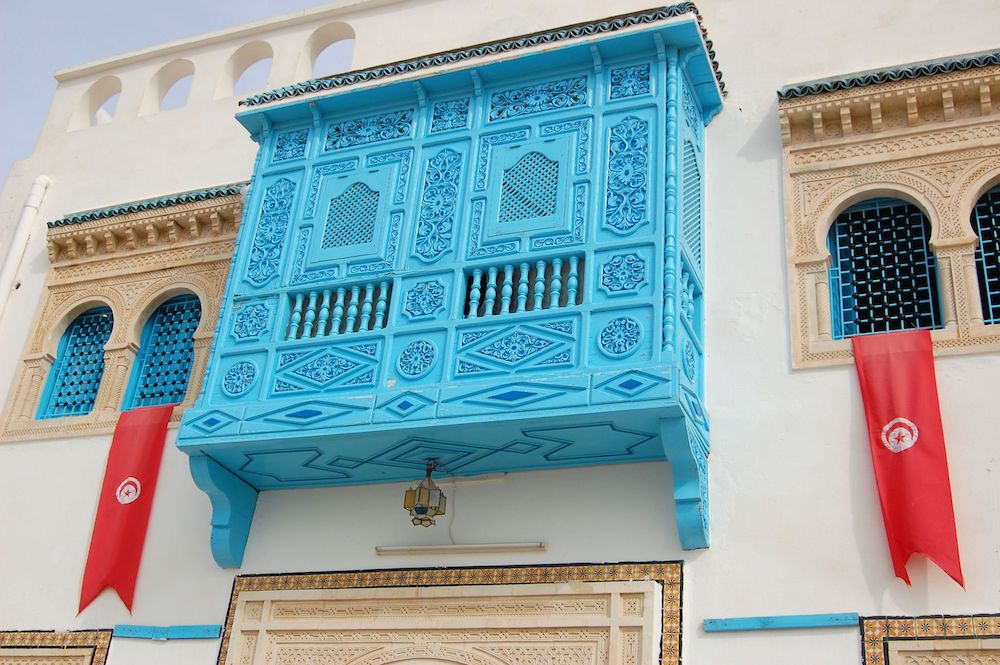

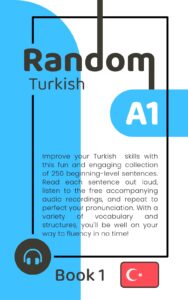
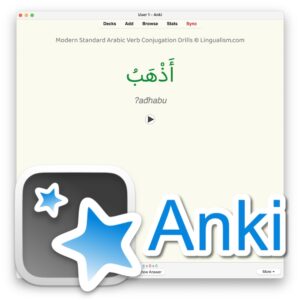
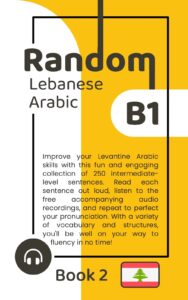

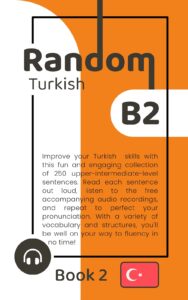
Very good! It is helpful to understand some stretches of “Arabic voices” spoken in Tunisian Arabic.